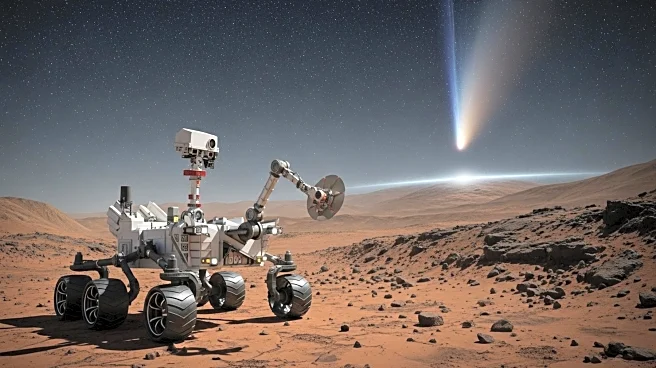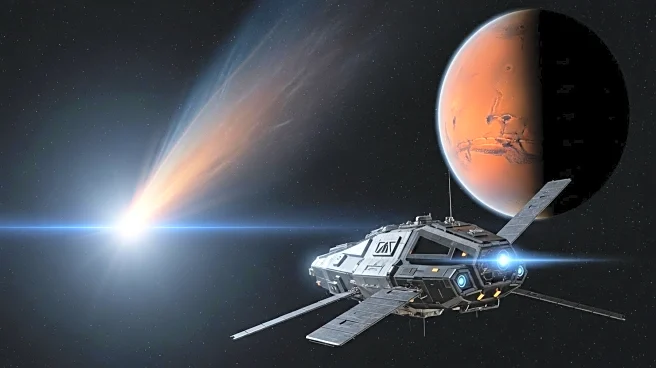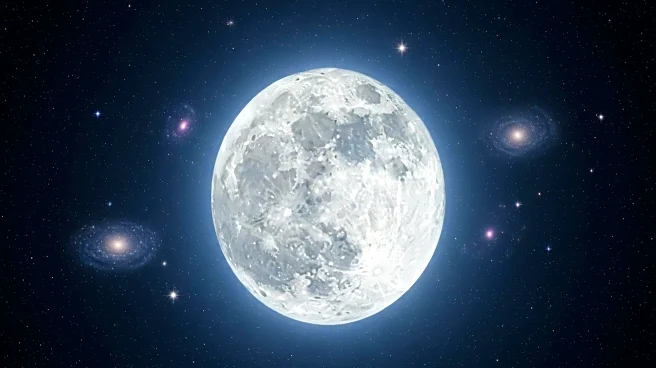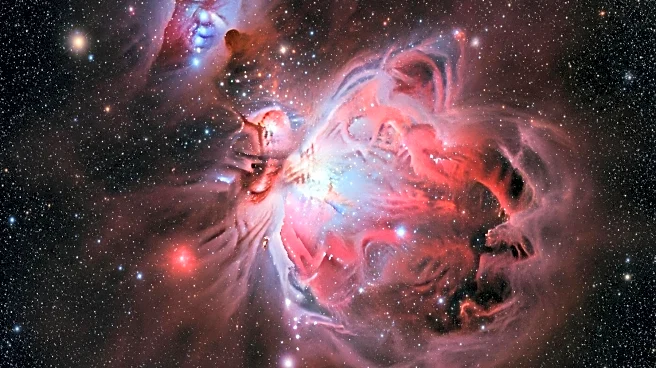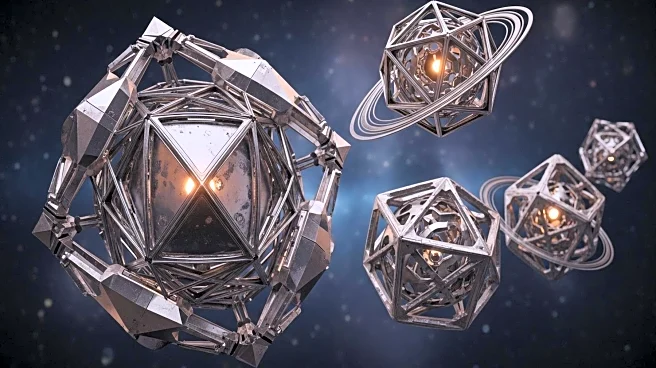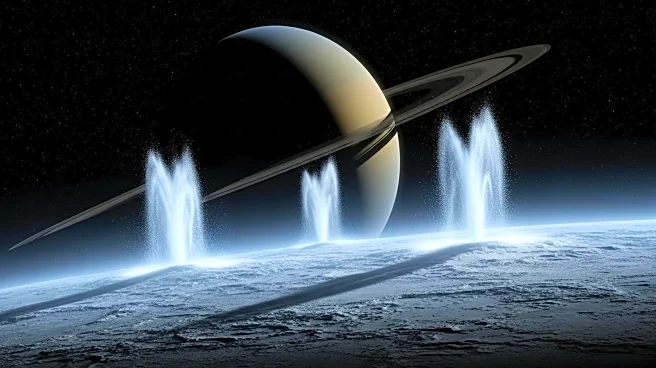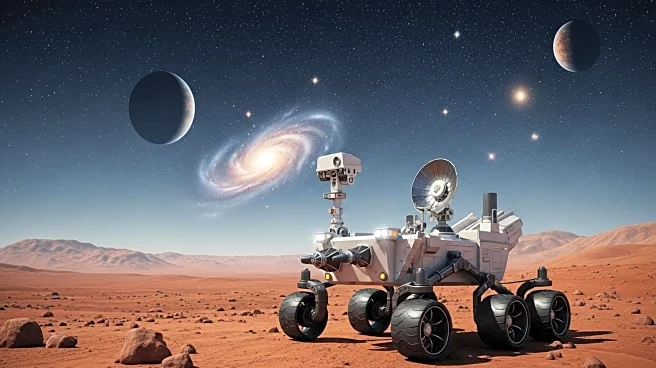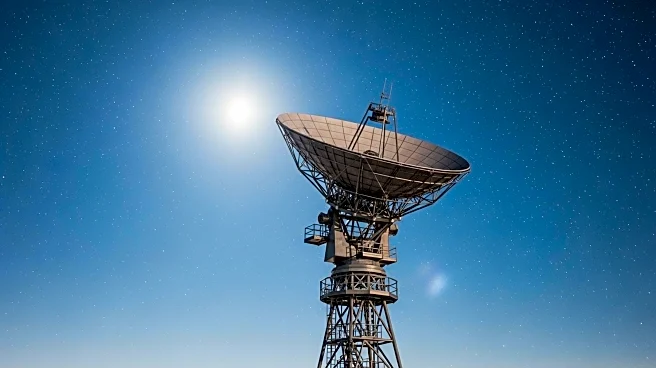What's Happening?
NASA's James Webb Space Telescope has captured a stunning image of star formation within the Lobster Nebula, located approximately 5,500 light-years away in the constellation Scorpius. The image reveals a young star cluster known as Pismis 24, which is home to some of the most massive and luminous stars ever observed. The cluster's proximity to Earth makes it an ideal location for studying the properties and evolution of massive stars. The image, taken in infrared light by Webb's NIRCam, showcases thousands of stars of varying sizes and colors, with the largest and most brilliant stars displaying six-point diffraction spikes. The image also highlights the impact of the intense radiation and winds from these infant stars, which are sculpting the surrounding cosmic dust and gas into dramatic spires and cavities.
Why It's Important?
The observations made by the James Webb Space Telescope provide critical insights into the processes of star formation and the evolution of massive stars. Understanding these processes is essential for comprehending the lifecycle of stars and the formation of galaxies. The data collected from Pismis 24 can help astronomers refine models of stellar evolution and improve predictions about the future of our own galaxy. Additionally, the ability to observe such phenomena in detail underscores the capabilities of the James Webb Space Telescope as a premier tool for space exploration and scientific discovery.
What's Next?
As the James Webb Space Telescope continues its mission, it is expected to provide further insights into the formation and evolution of stars and galaxies. Future observations may focus on other regions of star formation, as well as the study of exoplanets and the search for signs of life beyond our solar system. The ongoing collaboration between NASA, the European Space Agency, and the Canadian Space Agency will ensure that the telescope remains at the forefront of astronomical research.
Beyond the Headlines
The image of the Lobster Nebula not only highlights the scientific achievements of the James Webb Space Telescope but also serves as a reminder of the beauty and complexity of the universe. The intricate structures and vibrant colors captured in the image offer a glimpse into the dynamic processes that shape the cosmos. This visual representation of star birth can inspire a sense of wonder and curiosity about the universe, encouraging further exploration and study.

